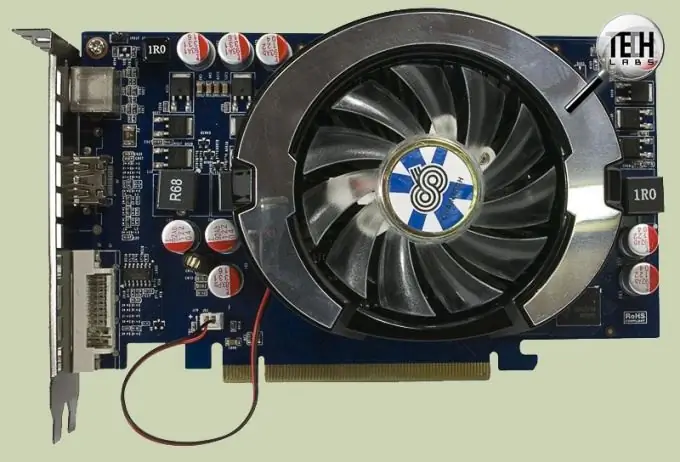A video card is a device that displays the results of a computer's operation. Modern video cards use their own resources - GPU and memory. Such a complex device, of course, can fail as a result of improper operation, power surges, design defects, and for many other reasons.

Instructions
Step 1
When you turn on the computer, the POST program starts and tests all devices. If the test is successful, the system generates a short beep. After that, the loading of the operating system begins. If any device is faulty, the BIOS (Basic In-Out System) issues a specific sequence of signals. By decrypting it, you can determine the malfunction.
Step 2
Different BIOS manufacturers assign different beep combinations to indicate a problem, but for a video card, this is usually one long and two short beeps. So, if an image does not appear on the screen when you turn on the computer, and instead of the usual short squeak, you hear some others, perhaps the problem is in the video card.
Step 3
If you have a video expansion card, shut down the computer and disconnect the electrical cable from the power source. Unscrew the fastening screws and remove the side panel of the system unit. Disconnect the interface cable that goes to the monitor. Unscrew the screw that secures the video card to the system unit and remove it from the slot. Wipe the contacts with a regular eraser and insert the adapter back firmly, until it stops. The plastic clips securing the card into the slot should click into place.
Step 4
Turn on your computer and check if the problem persists. If so, try checking the operation of the video card on another system unit - perhaps the problem is not with it, but with the motherboard.
Step 5
If you hear a regular short beep when turning on, but there is no image on the monitor, turn off the computer and check the interface cable - it may be loose or faulty.
Step 6
If, during prolonged operation, artifacts appear on the monitor screen in the form of colored stripes or pixels, it is possible that the video card is overheating. Install the Everest program, which monitors the temperature of devices inside the computer. If you do not have this opportunity, remove the side panel of the system unit and use your finger to try to determine the heating of the radiator, which is installed on the video card chipset.
Step 7
Modern GPUs are forcibly cooled using a cooler. See how the fan spins when the power is on. It may be clogged with dust that interferes with work. Remember that computer prophylaxis should be carried out regularly. Disconnect the computer from the electrical outlet, put a vacuum cleaner on the exhaust and blow out the system unit from the inside.
Step 8
If the device polling went well and the operating system does not load, you may have configured monitor settings that your computer does not support. In this case, after the POST signal, press the F8 key and select "VGA Mode" from the boot modes menu. After loading, set the minimum values of the parameters, reboot in normal mode and change the settings to those with which your video adapter can work.






